Resources

Designing Teacher Evaluation Systems is a collection of sixteen articles analyzing data produced by the Measures of Effective Teaching project, an initiative of the Bill and Melinda Gates Foundation. The research was conducted with three thousand pre-collegiate teachers working in urban districts. The results and the articles forming the book itself are divided among three themes: using data for feedback and evaluation, connecting evaluation measures with student learning, and the properties of evaluation systems. In short, the book takes on the challenge of what classroom observations and standardized test scores can tell us about good teaching. The core audience for the book seems to be those responsible for educational policy and leadership in primary and secondary schools. University faculty, especially those responsible for the evaluation of classroom teaching, may find this book to be of some use. The third chapter underscores the difficulty of consistency in classroom observation scores and insists on training procedures “that discipline observer judgments in order to produce valid and reliable scores” (53). The chapter goes on to analyze the distinctive approaches of “master scorers” versus those who are newly initiated. Similar arguments are made in the twelfth chapter on minimizing rater bias in classroom observations. The tenth chapter, “Understanding Instructional Quality in English Language Arts,” may be interesting to instructors in the humanities at any level. The authors of the study note that evaluation systems “make transparent what an organization values” and “no observation instrument is neutral” (325). They report that instructional quality varies in relation to the content of lessons and single out the teaching of writing as particularly challenging; an insight that college educators can appreciate. In chapter eleven, researchers investigate how “working conditions predict teaching quality and student outcomes” (332). Their evidence reveals that “active believer” teachers who maintain high expectations for their students and participate actively with colleagues produce better results in their classrooms. Amusingly, teachers in the contrasting and ineffective category are deemed “isolated agnostics.” It is also shown that students benefit from a mixture of “academic support” and “academic press” – they are fostered in different ways by being both cared for and challenged. This chapter ends with a list of thought-provoking implications for how educational leaders can create a better environment for effective teaching. Chapter fourteen offers another look at the “cognitive complexity” of scoring classroom observation rubrics (436). It is suggested that an observation cycle might be an effective remedy, where an initial thirty-minute observation focused on scoring a rubric precedes a longer diagnostic observation. In this way the observer is able to provide more focused feedback. The data-driven authors of this book would be the first to admit the conclusions within are not necessarily translatable to the college environment. I cannot, therefore, recommend a cover-to-cover reading to faculty working on the evaluation of university teaching. I do, however, believe that individual chapters contain interesting points of reflection on the teacher evaluation process at any level and have endeavored to highlight some of the best examples above.
This volume of twenty-one essays comes from the Professional and Organizational Development Network in Higher Education (POD) and is directed to faculty and institutional development staff, department chairs, faculty, deans, student services staff, chief academic officers, and educational consultants. Commensurate with their agenda to facilitate creative exploration, the essays are organized after they are collected, and arranged loosely by topic with about three essays per topic. The topics include developing new paradigms for faculty and professional development, tailoring faculty development to diverse audiences and partners, refining faculty development programs for maximum impact, reflecting on and advancing what developers do, responding to different graduate teaching assistants’ needs, enhancing student learning, and advancing new pedagogical concepts. The essays are written by educators and developers throughout the POD network and undergo a double-blind peer review system. As such, they do not deal with classroom teaching and application per se, but with ways to motivate, involve, measure, and prioritize self-reflective and critical development among educators. Several essays are of particular interest because they propose responses to changes emerging in higher education. Drawing on research into video games and their ability to attract and retain learners, for example, an essay by Kevin Yee encourages educators to apply game theory principles to course design (335-348). Even when instructors might not have the technical savvy to generate their own video game, they can apply the principles of successful gaming with low-tech options in their course design. For example, instructors might design learning opportunities that are narratives (such as a case study or an urgent problem that needs to be solved), have calibrated difficulty and rapid feedback response (such as online quizzes that can be taken until they reach 100 percent), employ diversions (such as add-on TED talks), and generate competition. Another essay, by Al Rudnitsky et al., describes a college-wide multiyear professional development effort that addressed the need for instructors to adapt their expertise to changing needs of students (127-143). It examines how instructors at Smith College formed a process-oriented (rather than skill-based approach) faculty learning community that explored recent research on how people learn, applying it both in their classrooms and in their learning community. They applied such principles as these: ultimately learning depends on what learners do, not what teachers do; existing knowledge has a profound effect on learners’ current thinking and learning; effective learners are metacognitive in that they set goals, self-monitor, and self-regulate; and learning is socially situated and mediated; the instructor’s task is to design complex learning environments and motivate students through evaluation. They contend, “understanding and deep learning that allow for better knowledge transfer and preparation for future learning are privileged educational outcomes” (133). The goal of the process, they found, was to build knowledge through discourse, idea improvement, and collective cognitive responsibility (135). In a third essay worth noting, Michael J. Zeig and Roger G. Baldwin describe concrete recommendations to help senior faculty (sixty-plus years, about 33 percent of professors in the U.S.) develop new meaning and purpose in this phase of their academic life. They suggest that senior faculty reflect on the priorities of their career and identify what resources they need, reconsider what success means in late career, seek out co-mentoring opportunities (in which younger faculty members share their expertise with their mentors, especially in technology), and plan their own professional development. Administrators, deans, and chairs need to see senior faculty members as individuals, maintain reasonable expectations, provide relevant development opportunities, and recognize and appreciate achievement (83-86). This volume is a valuable resource, with a rich bounty of essays geared to building, sustaining, evaluating, and promoting faculty development programs.
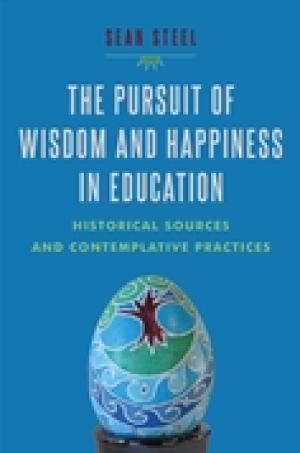
Steel includes in this work both recommendations and critiques that follow from his conviction that educators can and should take up the study of philosophy in their classrooms, which in this discussion is K-12. Using a foundation of classical Greek philosophy, the author takes up five themes in the book: (1) a survey of current ideas about how the pursuit of wisdom is or is not part of education; (2) a retrieval of ancient and medieval ideas of wisdom and the search for wisdom; (3) a critical examination of educational trends and practices and the barriers they create to the pursuit of wisdom; (4) use of ancient and medieval thought to assess current educational movements that aspire to promote wisdom; (5) a survey of movements understood as contemplative pedagogies and some cautions about their limitations. Finally, he indicates his own proposal for this project. Steel critiques current educational practice along lines that many readers will find familiar: emphasis on assessment, stress on global competition, and pursuit of technological expertise without concern for ultimate ends. All of these, he argues, have not only been mistaken for the ideal goals of education, they militate against the real goal – the pursuit of wisdom. Steel prescribes these as essential for the attainment of wisdom: schole (leisure) leading to theoria (seeing) the ultimate good through the experience of metaxy (an experience of tension as one reaches from ignorance toward the Supreme Good, ultimate truth, or being as such). Taking from Plato the movement of ascent and descent as essential to reaching toward wisdom, he emphasizes the necessity of “dying to self and all that is not wisdom” (4). Steel is thorough in explaining his viewpoint in relationship to a host of educational greats: Augustine, Aquinas, Maimonides, Pieper, and Bloom, to name but a few. The author states clearly that the pursuit of wisdom in a classroom today is likely to create serious negative pushback from the whole educational establishment. He believes this because he is convinced that only awareness of one’s ignorance makes wisdom possible. Such an experience of ignorance, he argues, is sure to be deeply uncomfortable and even intolerable for today’s students who are trained to attain the “right” answer above all. Such a practice is also contrary, he finds, to the mandate given teachers to produce students who can pass the required assessments. For the most part Steel leaves it to the reader to navigate a second potential problem, the fact that an educational institution may not necessarily agree that assisting students to reach toward the Supreme Good (or some other ultimate) is part of their educational mandate – or is even permissible. Steel acknowledges that philosophical programs and contemplative pedagogical movements that aspire to facilitate student encounters with wisdom are present. Many of these, he argues, do not reach their essential goal because they are used as a means to some end other than wisdom: health, relaxation, or happiness, for example. According to Steel, “contemplative activity is not a tool for happiness; it is happiness, for it is the highest activity of the best part of the soul in relation to its most sublime object in the Supreme Good” (259). His own programmatic proposal is extremely brief as a proportion of this substantial book and chiefly cites his own experience in teaching Greek philosophy to high school students and using more modern texts such as Walden to encourage a contemplative experience of the world. This volume will be appreciated by those interested in the intensive application of classic Greek philosophy to current educational practice and to a critique of current contemplative pedagogical movements.
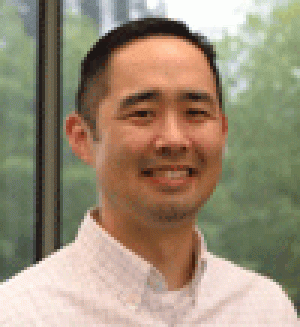
Roger S. Nam During my three years as a student at Chongshin Theological Seminary in Seoul, Korea, I never heard a single discussion related to diversity. The student body was roughly 90% male. Every student and faculty member was a member of the Korean Presbyterian Church, and engaged in some.

At a gathering of theological school deans one activity had the deans share the job descriptions from each of their schools. This group of deans was from a variety of contexts: different geographic regions, various denominations, free-standing and university-embedded schools,...

Kate Blanchard Last Monday I wore a suit to work, an occurrence rare enough that my students felt led to comment upon it. “You look so nice today!” exclaimed one, to which another quickly retorted, “That makes it sound like she doesn’t usually look nice!” A couple of others joined.

Richard Newton Assistant Professor of Religious Studies Elizabethtown College When I signed up to teach the Bible and Race in the USA, I didn’t know that my students would be able to live stream the lynching of Eric Garner and Tamir Rice. No one told me that modern courtrooms would accept a testimony from one who could liken Michael Brown to a demon. And did I mention that my undergraduate seminar was divided evenly along the color line—three white students with two black students and myself? Colleagues at my new school were excited and nervous for me. No one knew...
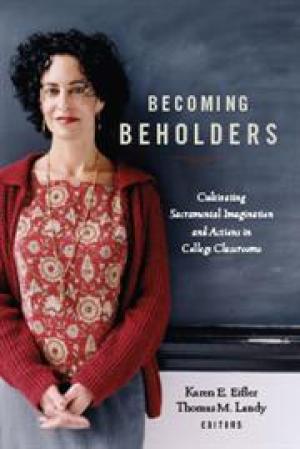
This thought-provoking, insightful collection of twenty articles is directed toward teachers at Catholic colleges, but it is applicable to anyone who teaches in higher education and who comes to that task from a faith perspective. A wide variety of disciplines are represented, including art, literature, writing, chemistry, math, economics, sociology, communication, history, Spanish, and, of course, religion. The book’s title and subtitle are suggestive. The title derives from a Hopkins poem, “Hurrahing in Harvest”: “These things, these things were here and but the beholder / Wanting” (xii). “Sacramental imagination” in the subtitle is described as “a deeply Catholic perspective on the world, one that sees God manifest throughout the natural, created world” (ix). This perspective is cultivated through “Actions in College Classrooms.” The authors therefore discuss in detail activities in courses that they have taught that relate to the topic of the book. They often quote from students’ journals or essays as a means of demonstrating student learning. They also describe activities that go on outside the classroom, such as trips to museums, personal reflection during the week, and service with nonprofit agencies as additional ways by which the sacramental imagination is cultivated. Several of these essays have appeared elsewhere, some in publications related to Collegium, a Catholic organization that describes itself as “a colloquy on faith and intellectual life”. (Indeed, the book is featured prominently on the group’s webpage.) The organization, Contemplative Mind in Society, is mentioned, as is the work of Parker Palmer. One, then, could see this book as part of a larger conversation about spirituality and education. Here a Catholic perspective on higher education is brought to bear. Incidentally, two authors have Wabash connections: Angela Kim Harkins was a Wabash fellow, and Anita Houck acknowledges a Wabash colloquy. The title of their essays are both representative: Houck’s “You Are Here: Engagement, Spirituality, and Slow Teaching,” and Harkins’ “Cultivating Empathy and Mindfulness: Religious Praxis.” Other interesting titles (and topics) include economist Peter Alonzi’s “Pauses,” English professor Melissa A. Goldthwaite’s “Rhetorics of Silence: A Pedagogy of Contemplation, Empathy, and Action,” and communications professor Jonathan M. Bowman’s “Mutual Benefice: Helping Students Find God in a Research Methods Course.” Readers of this resource might be tempted to read only the articles written by professors of theology or religious studies. That approach might be a good entry point to the book, but the treat is to see how teachers in various disciplines are cultivating sacramental imagination in their classrooms. A particularly intriguing example was Stephanie Anne Salomone’s use of a “This I Believe” essay in a geometry course, thus “Linking the Mathematical Axiomatic Method with Personal Belief Systems.” The concluding sentence of the book was fitting and invites reflection. Jonathan M. Bowman writes, “I have reinvigorated my own experience of transcendence as I teach and mentor my undergraduate students” (313). Reading this book – and pondering its implications for our teaching – can help us too “become beholders.”
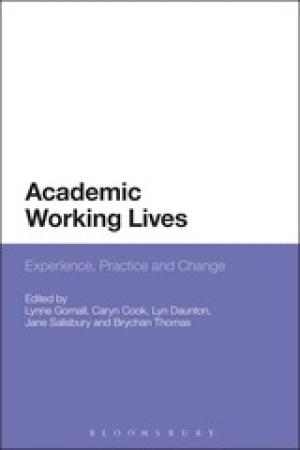
This compendium presents the reader with a myriad of international studies featuring methods of analysis on topics as varied as U.K. governmental policy regarding postsecondary education to the email habits of academics. Despite the disparate nature of the topics, methods, and analyses of these chapters, they each orient themselves around a central axis . . . that of the academic’s working life. The editors/research team assembled these short, seemingly splintered studies into the weighty tome that sits before me. The book itself exemplifies the momentum behind the project; it effectively registers the impact that thirty years of ideological, economic, technological, and political change has had on the work life of the academic. Long gone are the seemingly halcyon days of the lone academic researcher plumbing the depths of musty texts in the library. Many of these studies touch on the nature of academic work and how regulating agencies around the world (although these studies focus on the U.K., U.S., Japan, and a few other locations) have attempted to quantify the work (research, teaching, grant writing, administrative tasks, and so forth) done by academics. These various authors do not shy away from addressing how issues such as social class, gender, and social and political hierarchies continue to play out within academic worlds. A particularly compelling chapter highlights some of the divergent as well as shared problems among researchers in a number of institutions in African countries and Ireland. While other texts and studies have focused on the success or failure of educational reform in regard to student or institutional success, these studies look to the effect (good or bad or nil) these changes in educational policy, administrative practices, budgetary restrictions, technological innovations, and political and economic social narratives (such as commodification of education) have on the quotidian aspects of academic life. A few especially compelling chapters stuck out from the rest. One of these is Kelly and Boden’s “How Management Accounting Shapes Lives,” which explores the problem of the university-as-business ethos by tracking a professor seeking to combine outside research and teaching responsibilities and the skewed accounting which blocks him from doing so. On a more philosophical note, some authors wrote about what it means to examine, evaluate, and audit academic work, and others asked how grants, contract work, and contingency in academia create less than desirable conditions not just for academics but also for the research they produce. In her chapter on learning technologies, Alison Hudson utilizes Pierre Bourdieu’s theoretical nomenclature (symbolic violence and social capital, for example) to illustrate the changing dynamics in the fields of education and governance. She pinpoints the beginning of the radical shift in academics’ lives to the moment when “practice became increasingly influenced not by fundamental values and ethics, but by technologies of control aimed at changing the characteristic of the field” (248). Encyclopedic and topical, the editors have grouped these writings into five themed parts each of which contain a set of short, readable studies. Although the text is over three hundred pages, it is arranged in a reader friendly manner. These studies provide valuable reading for administrators, policy makers, academics, and anyone interested in the working lives of academics around the globe.
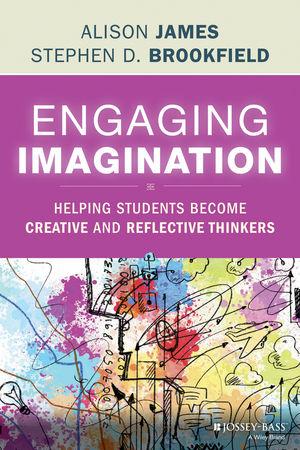
Engaging Imagination: Helping Students Become Creative and Reflective Thinkers poses a challenge to educators across fields to reach beyond traditional teaching and learning methods. Authors Alison James and Stephen D. Brookfield ask, “Why are we not open to varied expressive modes – video, art, drama, poetry, music – to gauge students’ learning? If there are multiple intelligences (Gardner, Frames of Mind: The Theory of Multiple Intelligences [New York, NY: Basic Books, 2011]), if students’ diverse histories, cultural backgrounds, racial identities, and personalities mean teaching and learning is inevitably complex (Allen, Sheve, and Nieter, Understanding Learning Styles: Making a Difference for Diverse Learners [Huntington Beach, CA: Shell Education 2010]) then shouldn’t our approaches to helping and assessing learning exhibit a similar variety” (4)? The book invites us to imagine “what if” (xii) students were given opportunities to explore their learning beyond lectures, discussions, reading, and writing. The authors do not intend to solve the institutional or assessment challenges of teaching more creatively, but to pose ideas for reflection and exploration. Each chapter provides websites to further engage concepts and activities described in the book. Part I, “Understanding the Role of Imagination in Learning,” argues in three chapters that students learn more effectively when they are given freedom to reflect. This is an engaged reflection, involving: creativity – where students are given ways to “unravel . . . question . . . ponder . . . clarify . . . demonstrate” (57); imagination – which focuses on possibilities; and play – learning engaged from new angles, leading to spontaneous insights. Part II, “Engaging Imagination Tools and Techniques,” forms the heart of the book and may prove to be a valuable resource to liven up syllabi and classrooms. In each of six chapters, a different way of teaching and learning is presented; two to eight activities are also described in detail, providing practical illustrations. Just one activity from each way of teaching and learning is included here. (1) Visual learning: Students create collages in response to a discussion question. (2) Story and metaphor: Students symbolize key learning experiences on a timeline. (3) Kinesthetic learning: Students use Legos or other concrete objects to construct models of their thinking-in-process. (4) Attending to physical space: A special space in the classroom (or an inflatable “pod”) can serve as a place where students, alone or in small groups, can video their live reflections. (5) Asking non-leading questions: Students are guided to think more deeply about their own beliefs by questions that ask for analogies, opposites, or ways of recognizing certain qualities. (6) Community impact on learning: Students map the various communities in their spheres of life to observe how each shapes their perspectives. Part III, “Negotiating the Realities of Engaging Imagination,” provides activities for students to navigate energy levels and emotions while learning. In a final chapter authors share how their own imaginations were engaged through the writing process. Engaging Imagination is not aimed so much at educators helping students to think creatively and reflectively about course content, but rather at presenting ways educators may help students to reflect on themselves as learners. Thus the subtitle can be misleading. However, most of the learning activities could be adapted for deepening student understanding of course content. The emphasis on student self-awareness contributes to the current pedagogical shift from teaching to impart information towards facilitating and empowering student-directed learning in a variety of classroom and online settings. Little is offered by way of guiding students towards a directed end; indeed doing so would negate the purpose of many of the activities. It is therefore significant that authors acknowledge their work as a complement to, rather than replacement of, traditional forms of teaching and learning. We are left with the same challenge students will have as a result of “engaging imagination”: to appropriate the insights gained.